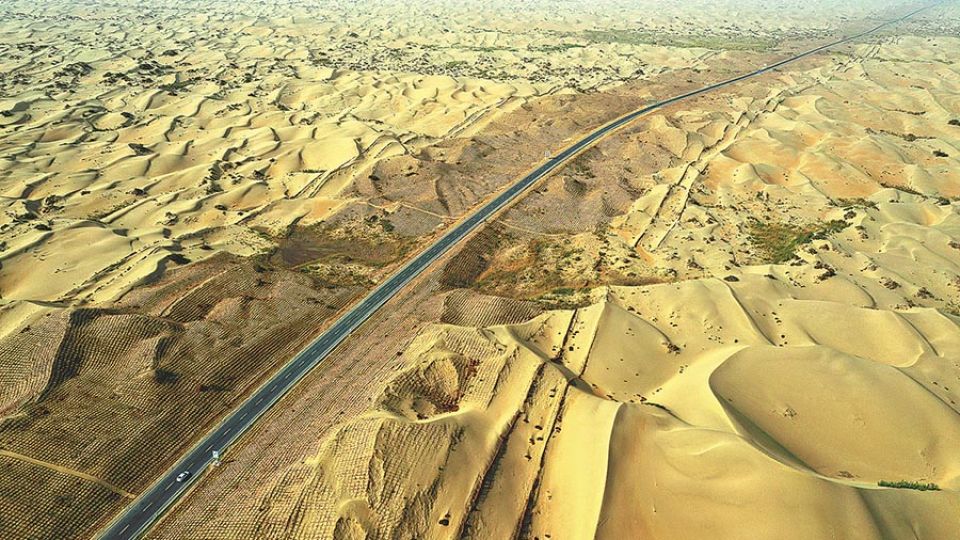July 6, 2022
BEIJING – A desert highway in southern Xinjiang Uygur autonomous region opened on Thursday, slashing travel time, benefiting locals and boosting regional socioeconomic development, according to its construction company.
The 334-kilometer highway, linking Yuli and Qiemo counties in the Bayingolin Mongol autonomous prefecture of Xinjiang, is located at the Tarim Basin between the southern slope of the Tianshan Mountains and north side of the Altun Mountains.
The highway was built by China Communications Construction Company, a multinational engineering and construction enterprise that mainly focuses on developing ultralarge infrastructure.
The new highway crosses the hinterland of the Taklimakan Desert, China’s largest desert. It is the third desert road that has been built through the desert.
Nearly 92 percent of the new road-307 km-is in the desert, making construction tremendously difficult.
“It was one of the world’s most challenging desert roads to build,” said Wang Yunfei, the road’s project manager from the CCCC.
The highway is expected to significantly benefit residents in the prefecture.
“It reduces travel time between Qiemo county to Korla, capital of the Bayingolin Mongol autonomous prefecture, from 12 hours to 6, improving travel experiences for local residents, reducing their living costs and helping them sell agricultural produce outside the region,” said Li Ying, deputy general manager of Xinjiang Communications Investment and Development Corp, a subsidiary of CCCC.
The route traverses an area with rich petroleum resources in the Tarim Basin, which will provide strong support for oil and gas exploration and transportation, boosting socioeconomic development in southern Xinjiang, he added.
“My family’s cotton field is by the Tarim River. With enough water, my cotton is usually harvested,” said Li Jinjian, a cotton grower from Yuli county.
“But during the harvest and sales season in the past, I was often worried and concerned because the trip from my cotton field to the nearest cotton collection center was an exhausting journey.
“Although the distance (from the cotton field and the closest place to sell cotton) was only less than 50 km away, it took a few days to complete the trip because we had to cross the desert and river. The new highway gives me hope. Cotton can be sent out easily and hopefully our income will also increase,” he added.
Workers had to overcome challenges in construction.
“The route crosses the Taklimakan Desert in a north-south direction. With a seven-month windy season in the desert, extremely harsh natural conditions were not the only challenge. We also had to face problems such as having no water, no electricity, no mobile phone signals and frequent sandstorms with visibility less than 5 meters,” project manager Wang said.
To reduce the harm to the environment, construction workers used the main roadbed instead of building a new foundation, which is a widely adopted method in road construction.
“We tried hard to protect the fragile desert environment,” Wang said.
Because of complicated geographic conditions and extreme weather, some regions in southern Xinjiang have poor transport networks. However, the region’s infrastructure has been greatly improved this year.
In addition to the new highway, a railway in the Bayingolin opened in June.
The railway is located on the southern edge of the Taklimakan Desert, the last leg to form a railway loop circling the desert. It’s also the world’s first railway loop circling a desert.


